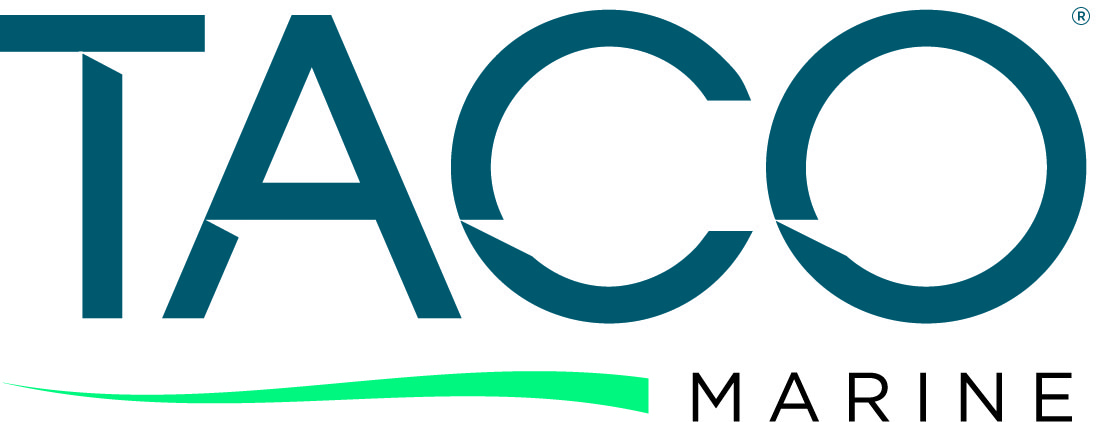
The ShadeFin® Logo Decal by TACO Marine is a great addition to boats, vehicles or other surfaces. Please keep reading for information on this decal from Sharpline.
Removing the ShadeFin Logo Decal
Removing the ShadeFin decal is not recommended. Once the decal is applied, the foam adhesive builds a very aggressive bond and is very difficult to take off. TACO is not responsible for incorrect decal applications or damage caused when trying to remove the decal.
Preparing Marine Surfaces for Decal Application
This bulletin details specific surface preparation and application instructions of vinyl graphic products onto non- vehicular surfaces. Applications will be successful if the instructions are followed completely.
GENERAL SURFACE PREPARATIONS:
All surfaces are considered contaminated until properly cleaned. Thus, all surfaces MUST be cleaned prior to any application of vinyl graphic products. See the following steps:
Wash the surface with detergent and water, then thoroughly rinse the surface with water and dry completely.
Saturate a clean cloth with a solvent approved by local EPA regulations and wipe the surface to remove any
contaminates such as silicone, wax, chalk or adhesives.
Dry the surface with a lint free towel before the solvent evaporates.
Spray the surface with one of the following products:
Isopropyl alcohol (recommended for fiberglass)*
BETCO CitruSolv degreaser P.N. 209 OR 3M Citrus Base Industrial Cleaner P.N. 62-4456-8530-8 (recommended for corrugated metal) Note: To locate a local distributor for BETCO CitruSolv call 888-462- 3826.
Wipe immediately with a clean dry towel to dry the surface.
SPECIFIC SURFACE PREPARATIONS:
The following procedures describe specific surface preparation. All surfaces need to be evaluated to determine which of the following procedures is appropriate.
PAINTED CORRUGATED METAL SURFACE PREPARATIONS:
• Aluminum – Gloss Smooth Pre-painted
Spray surface area where vinyl graphics are to be applied with a liberal amount of BETCO CitruSolv
degreaser OR 3M Citrus Base Industrial Cleaner.
Wipe surface dry with a clean dry towel using a horizontal motion parallel to corrugated metal pattern. Be
sure to wipe all surfaces of the profile completely dry.
Spray surface with Isopropyl Alcohol. *
Wipe surface completely dry with a clean dry towel using a horizontal motion parallel to corrugated metal
pattern.
FIBERGLASS SMOOTH SURFACE PREPARATIONS:
• Fiberglass –
Clean any silicone, caulk, or adhesives with a clean towel saturated with a solvent in accordance with local,
state and federal regulations. Acetone, lacquer thinner, and similar products are not recommended by the
manufacturer of fiberglass substrates.
Spray surface area where vinyl graphics are to be applied with a liberal amount of Isopropyl Alcohol. **
Wipe surface completely dry with a clean dry towel.
* The use of Isopropyl Alcohol as a cleaning agent is restricted in some regions. Nothing in this Technical Bulletin is intended as a recommendation to violate federal, state, or local regulations.
** When the use of Isopropyl Alcohol is restricted, substitute BETCO CitruSolv degreaser OR 3M Citrus Base Industrial Cleaner to clean fiberglass surfaces. Be sure to follow with a clean dry towel to remove all residue before vinyl graphic application.
Preparing Automotive Surfaces for Decal Application
Preparation of Painted Surfaces for Truck and Automotive
This bulletin details specific surface preparation and application instructions of vinyl graphic products onto non-vehicular surfaces. Applications will be successful if the instructions are followed completely.
GENERAL SURFACE PREPARATIONS:
All surfaces are considered contaminated until properly cleaned. Thus, all surfaces MUST be cleaned prior to any application of vinyl graphic products. See the following steps:
Wash the surface with detergent and water, then thoroughly rinse the surface with water and dry completely.
Saturate a clean cloth with a solvent approved by local EPA regulations and wipe the surface to remove any contaminates such as silicone, wax, chalk or adhesives.
Dry the surface with a lint free towel before the solvent evaporates.
Spray the surface with isopropyl alcohol (recommended) or BETCO CitruSolv degreaser; follow
immediately to dry the surface with clean dry towel. This should remove any residue remaining from the cleaning solvent.
SPECIFIC SURFACE PREPARATIONS:
The following recommendations describe surface preparation procedures. All surfaces need to be evaluated to determine if they meet performance criteria as detailed.
SURFACE PREPARATIONS FOR: • Fiberglass
1. Use general cleaning procedures outlined above
2. Gelcoat cracking of the fiberglass may cause applied vinyl also to crack.
• Roll Up Doors
1. Metal doors use the general cleaning procedures outlined above.
2. Fiberboard doors are subject to moisture absorption and is often a marginal application surface. To
prevent failure of vinyl graphic adhesion the door must have a thick, smooth coating of paint. Use general cleaning procedures outlined above.
• Chalked and Weathered Paint
1. Avoid paint finishes which tend to chalk such as flat metallics.
2. Use mechanical buffing to remove chalked and weathered paint. 3. Follow with general cleaning procedures outline above.
• Newly Painted
Follow all drying and curing instructions provided by the paint manufacture prior to any surface
preparation.
Baked enamels can be immediately cleaned after cooling.
Air-dried paints require five days of drying time before surface preparation.
NON RECOMMENDED PAINT SURFACES:
Avoid the use of the following paint finishes; always test adhesion and paint/adhesion compatibility prior to surface preparation and application of vinyl graphics.
Highly pigmented or flat metallic paints which tend to chalk and flake.
Flat latex paint on metal or wood substrates.
Paint containing migratory agents, such as chlorinated waxes and silicones.
Oil alkyd primers and enamels because of slow cure times.
RECOMMENDED PAINT SURFACES:
Always test adhesion and paint/adhesion compatibility prior to surface preparation and application of vinyl graphics.
High quality exterior grade paints.
OEM paint systems.
URETHANE PAINT SYSTEMS AND CLEAR COATS:
Outgassing can occur which will cause bubbling of applied vinyl graphics.
A minimum of 5 days curing time at 70 degrees F or above is required. Less than 5 days requires testing for outgassing.
Properly clean surface and apply a 2-inch by 2-inch piece of vinyl to the paint.
Check the test sample after 24 hours for bubbles due to outgassing. If no evidenced of bubbles application can be done.
Due to the extremely smooth surface of some paints, applied vinyl may not initially exhibit maximum adhesion. A short period of exposure will be necessary before maximum adhesion is obtained.










